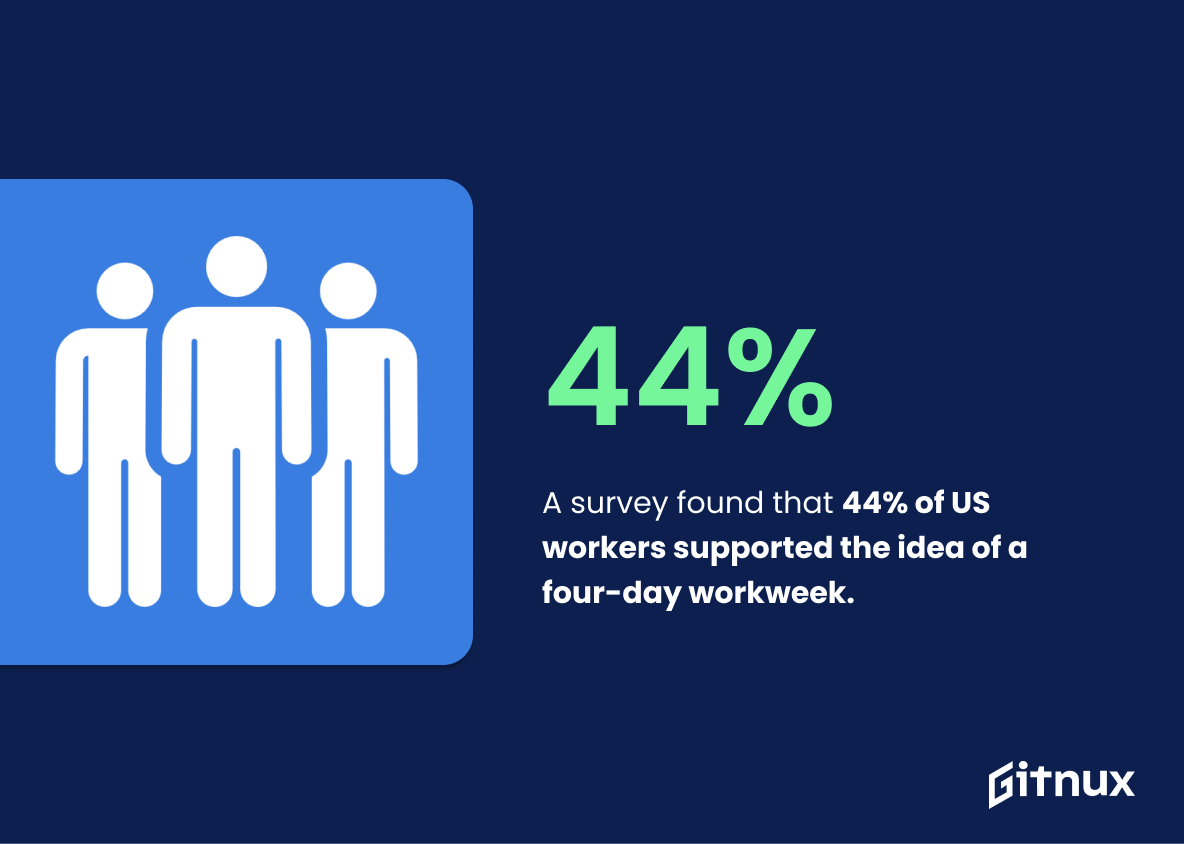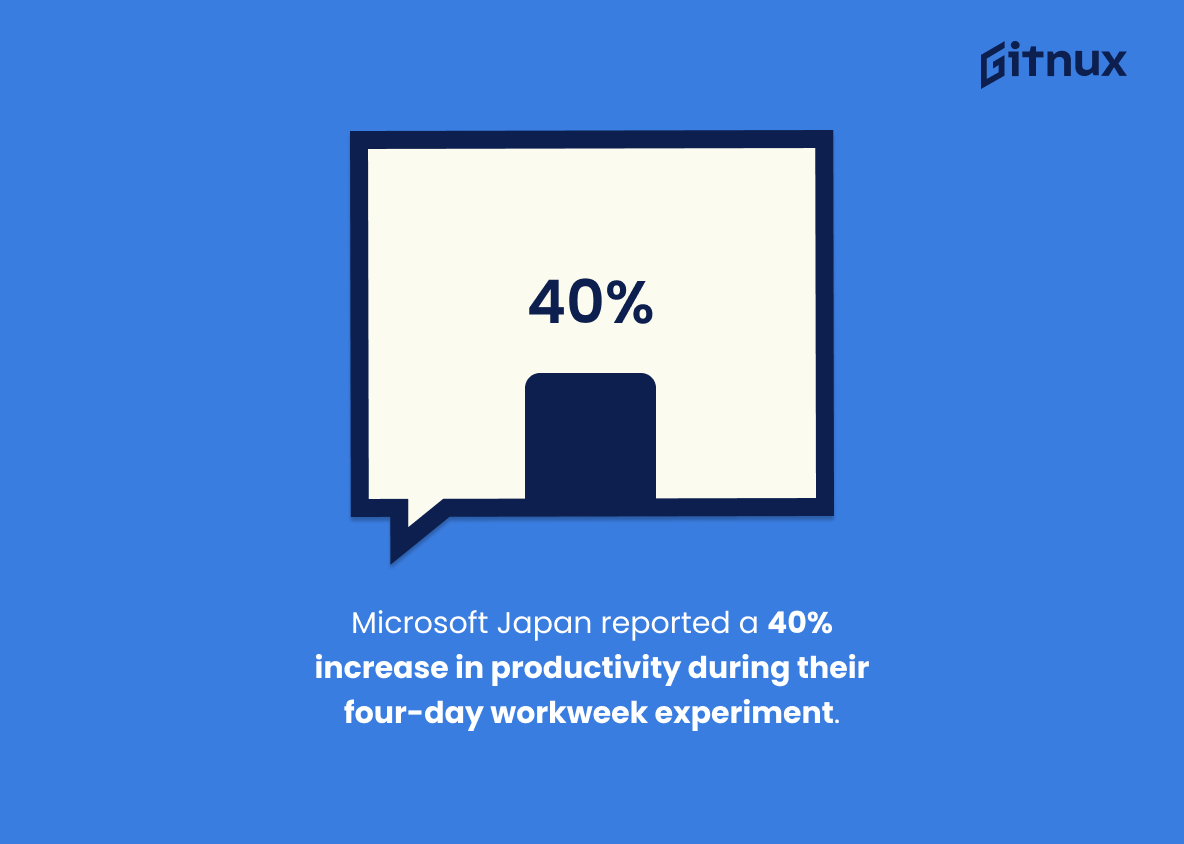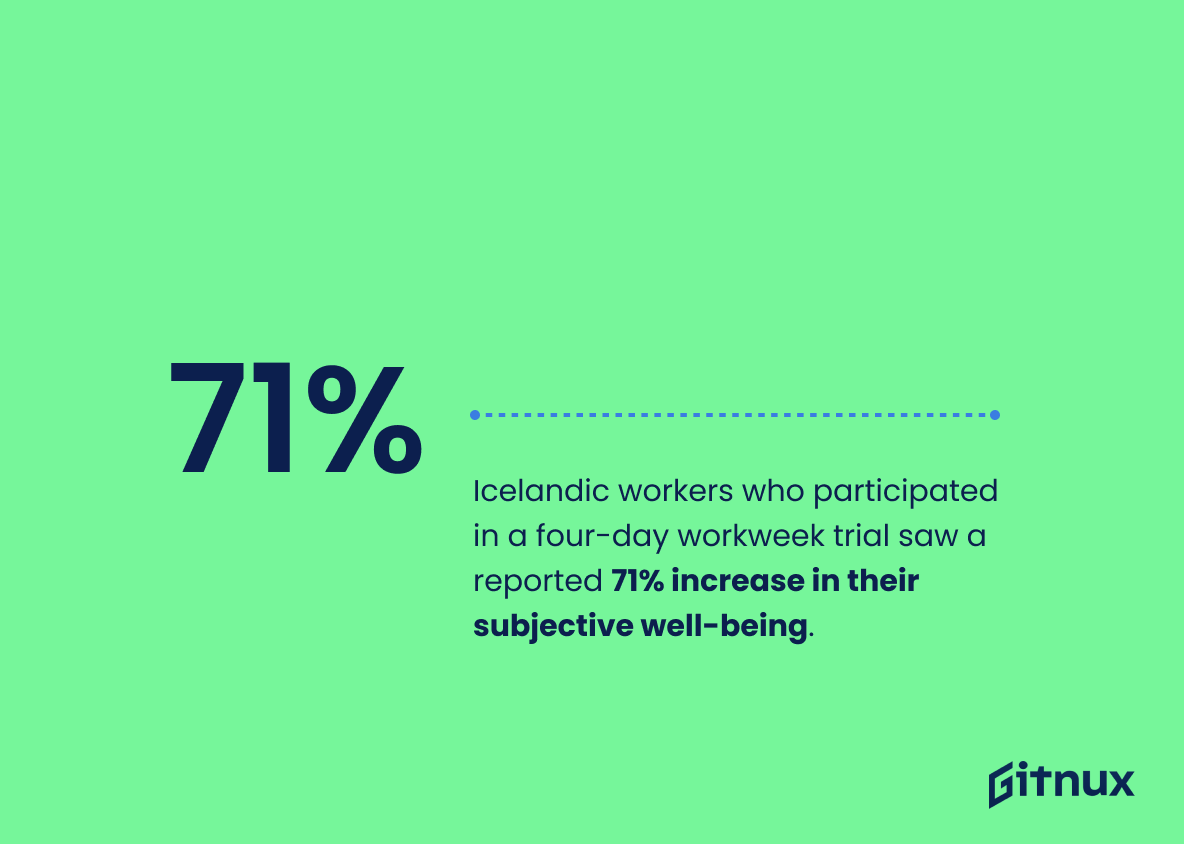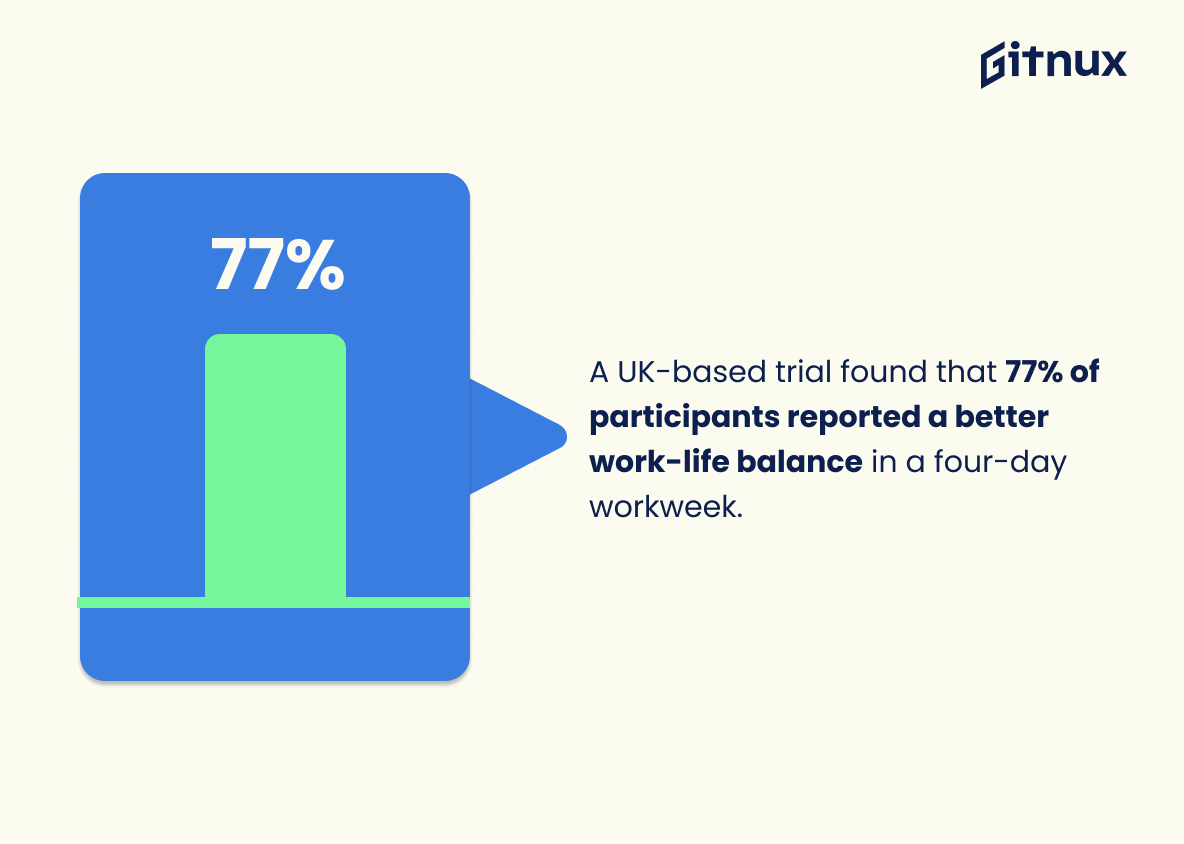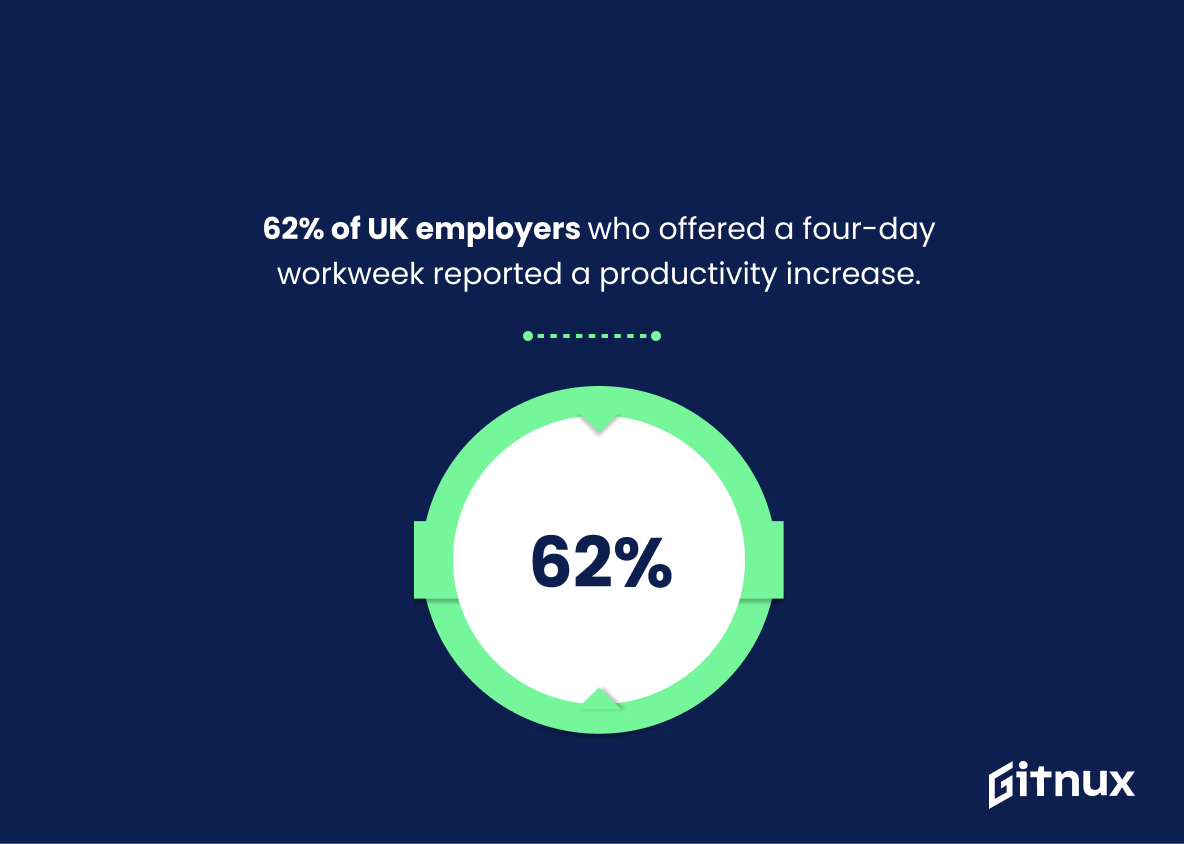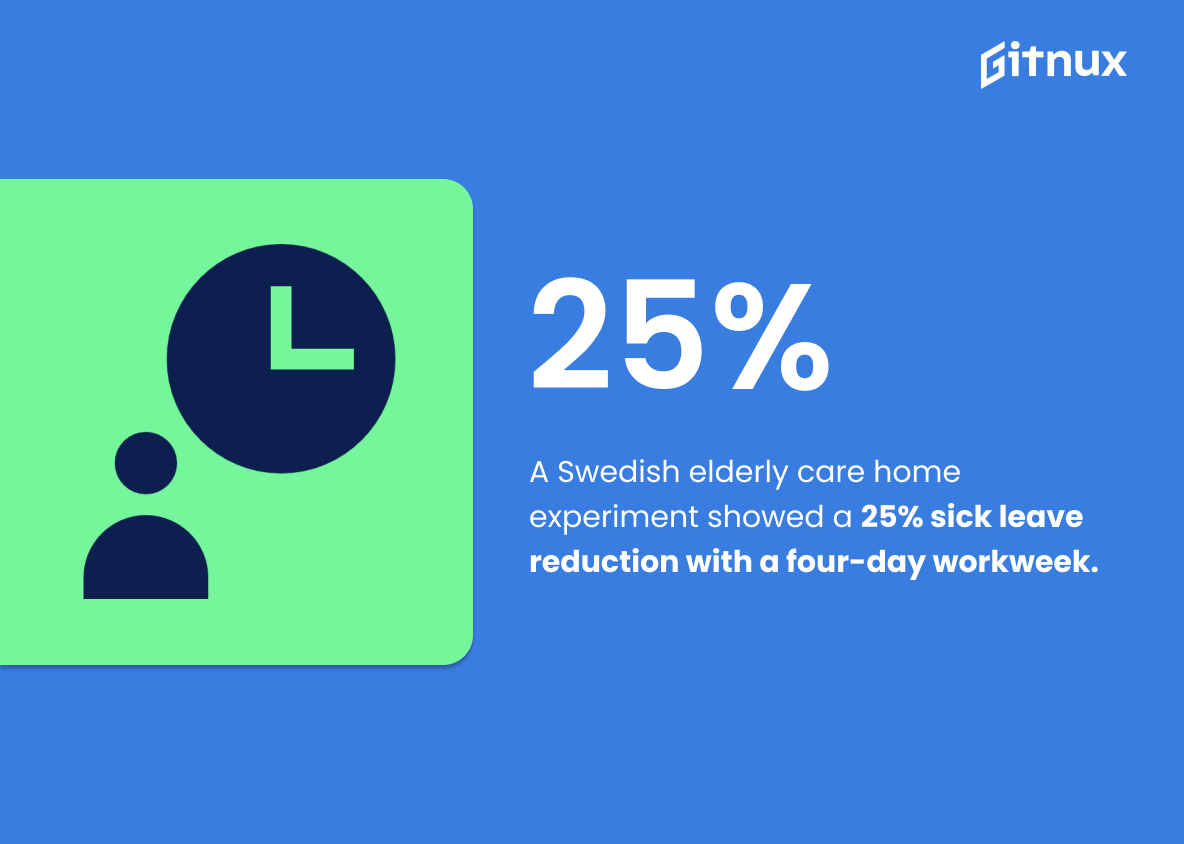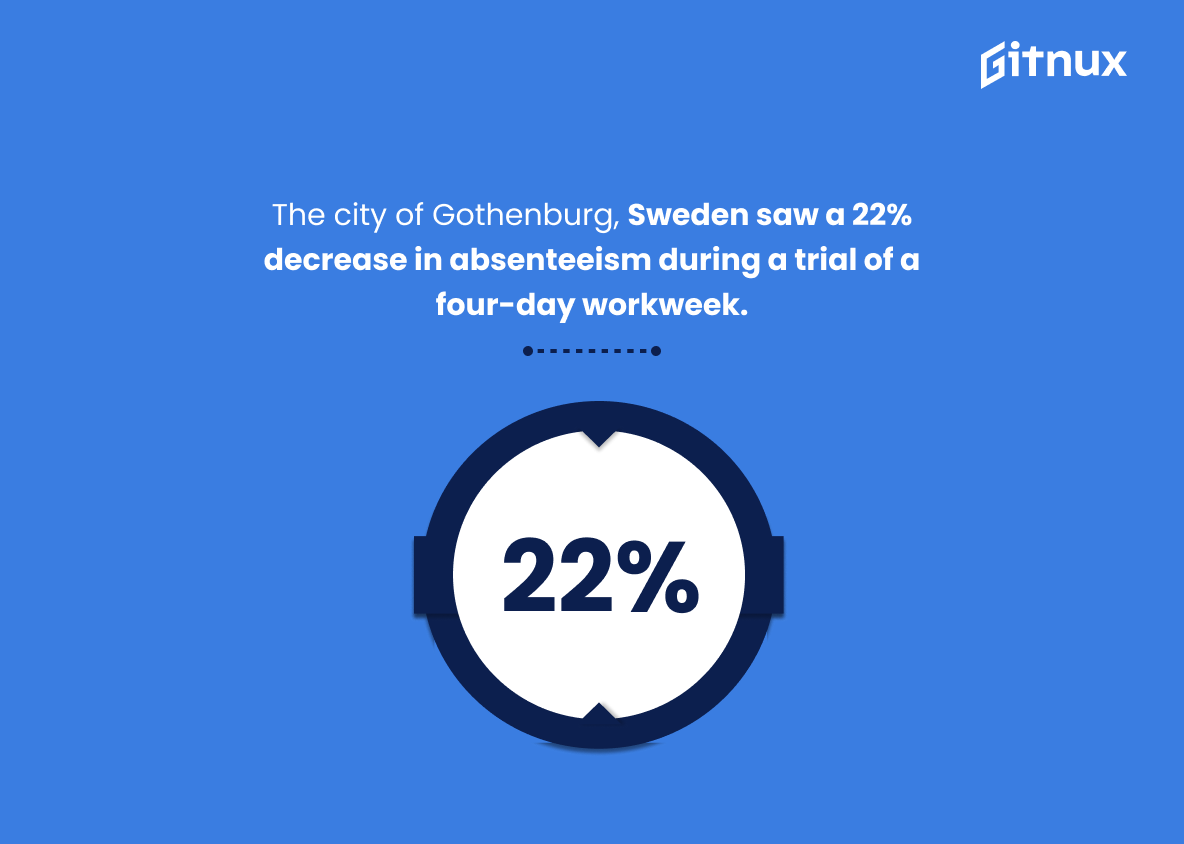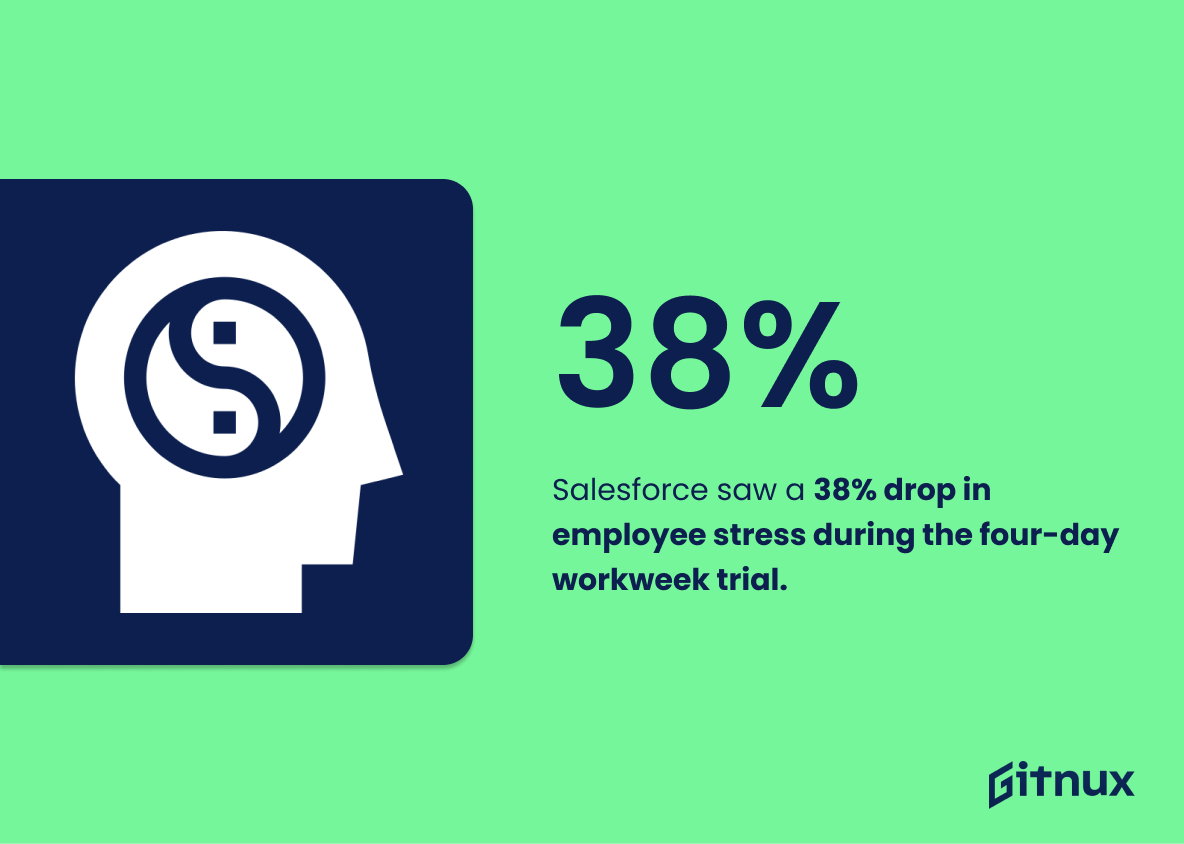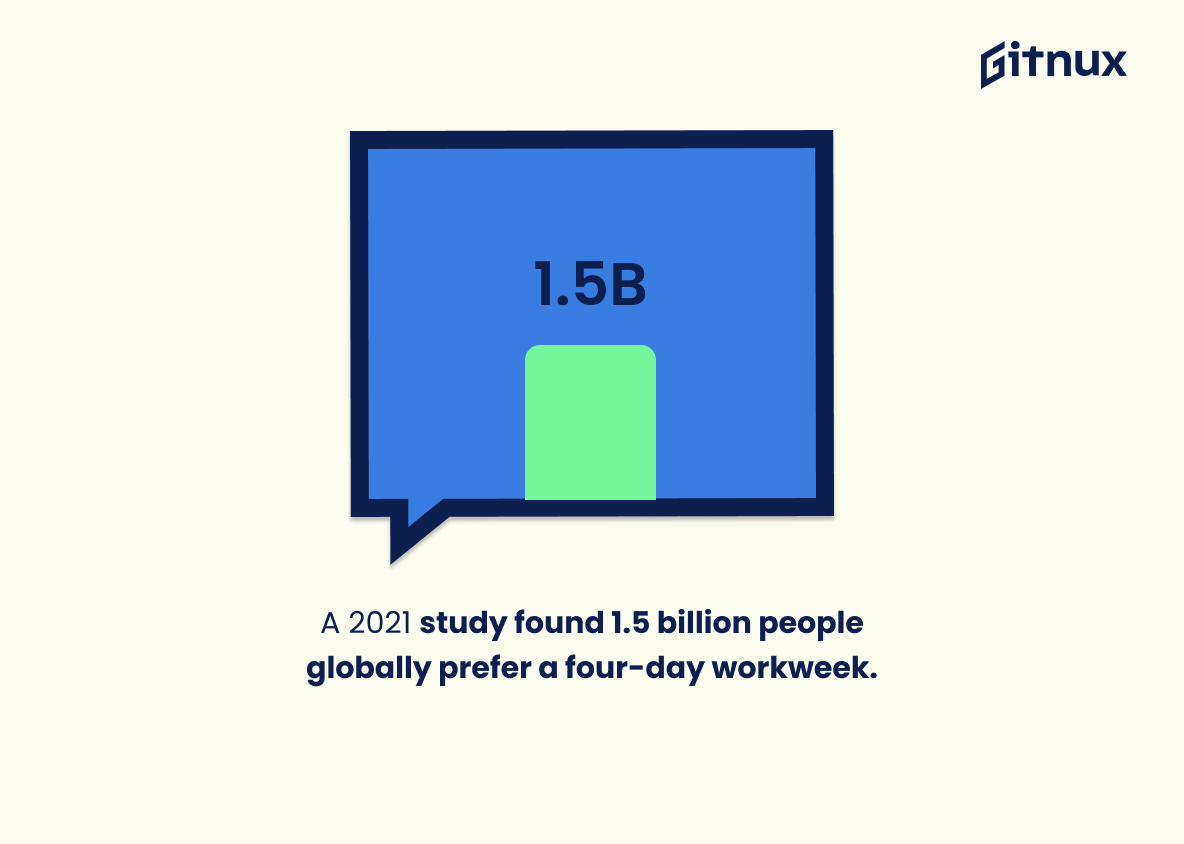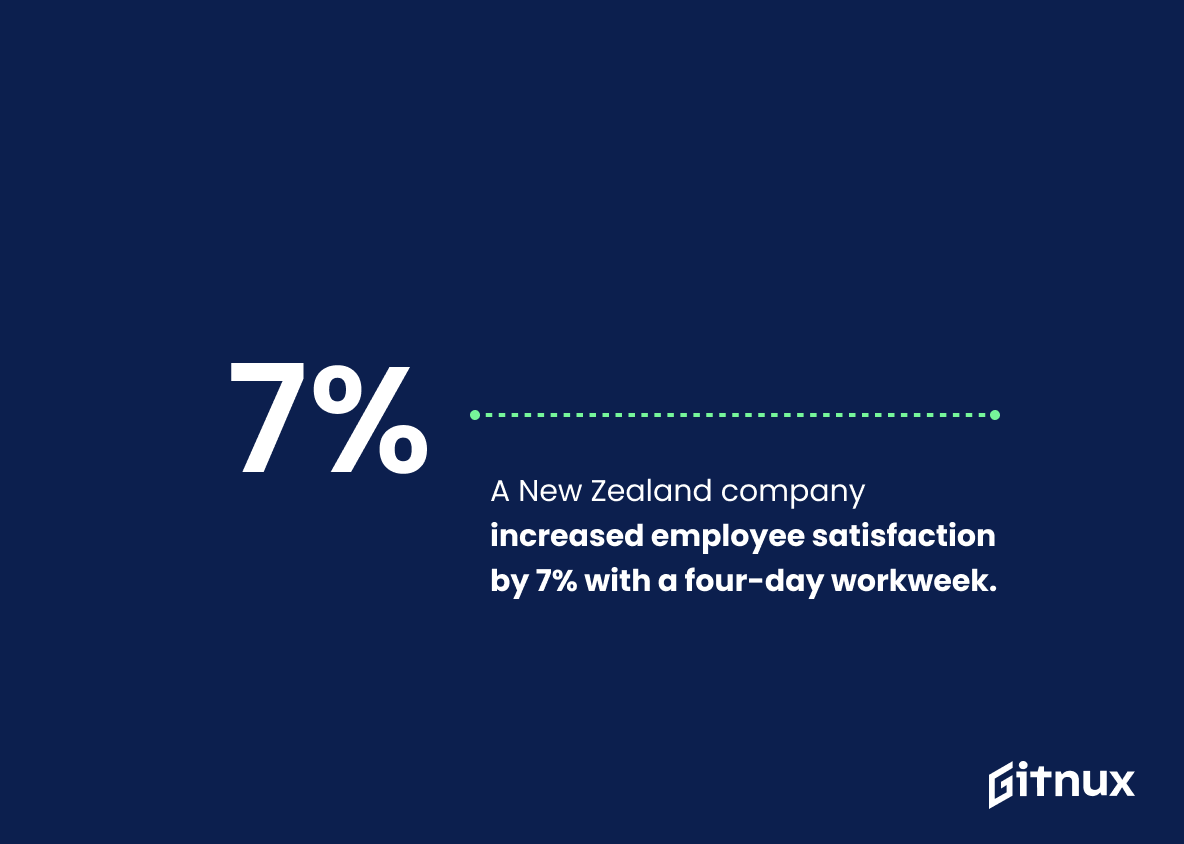As the world of work continues to evolve, many companies are exploring new ways to increase productivity and improve employee satisfaction. One such option is a four-day workweek, which has been gaining traction in recent years as more employers look for innovative solutions that can benefit both their employees and their bottom line. This blog post will explore some of the statistics surrounding this trend, including studies on improved work-life balance, increased productivity levels among remote workers, higher employee satisfaction rates across different countries and industries, reduced carbon emissions from shorter working hours, and more. We’ll also take a closer look at how these findings could shape future trade agreements or legislation related to workplace policies around the globe.
This statistic is a powerful testament to the positive impact that a four-day workweek can have on employees’ work-life balance. It demonstrates that by reducing the number of days spent in the office, employees can enjoy a significant improvement in their overall quality of life. This is an important point to make in a blog post about four-day workweek statistics, as it highlights the potential benefits of such a schedule.
In a New Zealand company, 78% of staff felt they were able to manage their work-life balance during the four-day workweek trial.
This statistic is a testament to the success of the four-day workweek trial in New Zealand. It shows that the majority of staff felt they were able to manage their work-life balance, indicating that the trial was successful in achieving its goal of providing employees with more time to rest and relax. This is an important point to make in a blog post about four-day workweek statistics, as it demonstrates that the trial was successful in providing employees with a better work-life balance.
Four Day Work Week Statistics Overview
A survey found that 44% of US workers supported the idea of a four-day workweek.
This statistic is significant in the context of a blog post about Four Day Work Week Statistics because it demonstrates the level of support for the concept among US workers. It provides a tangible indication of the potential for a four-day workweek to be adopted in the US, and serves as a useful reference point for further discussion.
Microsoft Japan reported a 40% increase in productivity during their four-day workweek experiment.
This statistic is a powerful testament to the potential of a four-day workweek. It shows that not only can a shorter workweek be feasible, but it can also lead to increased productivity. This is an encouraging sign for those who are considering implementing a four-day workweek in their own workplace.
Icelandic workers who participated in a four-day workweek trial saw a reported 71% increase in their subjective well-being.
This statistic is a powerful testament to the positive impact that a four-day workweek can have on an individual’s overall well-being. It demonstrates that reducing the number of hours spent in the office can have a significant and positive effect on an employee’s mental and emotional health. This statistic is an important reminder that work-life balance is essential for a healthy and productive workforce.
A UK-based trial found that 77% of participants reported a better work-life balance in a four-day workweek.
This statistic is a powerful testament to the effectiveness of the four-day workweek. It shows that the majority of participants experienced a positive change in their work-life balance, indicating that the four-day workweek is a viable option for improving the quality of life for employees.
62% of UK employers who offered a four-day workweek reported a productivity increase.
This statistic is a powerful testament to the potential of a four-day workweek to boost productivity. It shows that, when implemented correctly, a four-day workweek can be an effective way to increase output and efficiency in the workplace. This is an important point to consider when discussing the merits of a four-day workweek, and it should be highlighted in any blog post about the topic.
A Swedish experiment in a Gothenburg-based elderly care home reported a 25% reduction in sick leave for workers on a four-day workweek.
This statistic is a powerful testament to the effectiveness of the four-day workweek. It shows that not only can it be implemented successfully, but it can also lead to tangible benefits for workers, such as a reduction in sick leave. This is an important point to make in a blog post about Four Day Work Week Statistics, as it demonstrates that the four-day workweek is not just a theoretical concept, but a viable option with real-world benefits.
In a US study, 27% of small business owners reported increased employee satisfaction after implementing a four-day workweek.
This statistic is a powerful testament to the positive impact that a four-day workweek can have on employee satisfaction. It shows that by making this change, businesses can not only improve their employees’ quality of life, but also increase their overall satisfaction with their job. This is an important statistic to consider when discussing the potential benefits of a four-day workweek.
In a Dutch study, 58% of participants agreed that a four-day workweek would be beneficial for their overall well-being.
This statistic is a powerful indicator of the potential benefits of a four-day workweek. It shows that the majority of participants in the Dutch study believe that a four-day workweek would be beneficial for their overall well-being. This statistic can be used to support the argument that a four-day workweek could be beneficial for employees and employers alike.
In a 2021 survey, 85% of employees showed a preference for a four-day workweek.
This statistic is a powerful indicator of the potential success of a four-day workweek. It shows that the majority of employees are in favor of the idea, which could be a strong motivator for employers to consider implementing the change. It also suggests that employees are willing to make the necessary adjustments to their work schedules in order to make the four-day workweek a reality. This statistic is an important piece of evidence that should be included in any blog post about four-day workweek statistics.
The city of Gothenburg, Sweden saw a 22% decrease in absenteeism during a trial of a four-day workweek.
This statistic is a powerful testament to the effectiveness of the four-day workweek. It shows that when given the opportunity to work fewer days, employees are more likely to show up to work, resulting in a significant decrease in absenteeism. This is an important piece of evidence that should be taken into consideration when discussing the potential benefits of a four-day workweek.
Salesforce reported a 38% decrease in stress levels among employees who participated in a four-day workweek trial.
This statistic is a powerful testament to the positive impact that a four-day workweek can have on employee stress levels. It shows that reducing the number of days spent in the office can have a significant and beneficial effect on employees’ mental health and wellbeing. This is an important point to consider when discussing the potential benefits of a four-day workweek.
A 2021 study found that an estimated 1.5 billion people across the globe now have a preference for a four-day workweek.
This statistic is a powerful indicator of the growing trend of people embracing the four-day workweek. It shows that an increasing number of people are recognizing the benefits of having a shorter workweek, such as improved productivity, better work-life balance, and increased job satisfaction. This statistic is an important piece of evidence that can be used to support the argument that the four-day workweek is becoming more popular and should be taken seriously.
A New Zealand company reported an overall increase in employee satisfaction by 7% while implementing a four-day workweek.
This statistic is a testament to the success of the four-day workweek, demonstrating that employees are happier and more satisfied with their jobs when given the opportunity to work fewer days. It is a powerful example of how a shorter workweek can benefit both employers and employees alike.
Conclusion
The evidence is clear: a four-day workweek can have numerous benefits for both employers and employees. From improved productivity to increased satisfaction, the statistics show that implementing a shorter work week could be beneficial in many ways. Employees reported better work-life balance, higher levels of well-being, and an overall increase in job satisfaction when given the option of working fewer days per week. Employers also saw positive results from their trials with decreased absenteeism rates and increased efficiency among workers on a four day schedule. With such promising results across multiple studies around the world, it’s no wonder why so many people are advocating for this change in workplace culture moving forward.
References
0. – https://www.theguardian.com
1. – https://www.independent.co.uk
2. – https://www.shrm.org
3. – https://www.hbr.org
4. – https://www.seekingalpha.com
5. – https://www.bbc.com
6. – https://www.businessinsider.com
7. – https://www.forbes.com
8. – https://www.marketwatch.com
9. – https://www.gartner.com
10. – https://www.weforum.org
11. – https://www.sciencefocus.com
ZipDo, cited June 2023: Four Day Work Week Statistics
